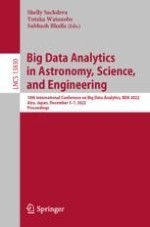2023 | Book
Big Data Analytics in Astronomy, Science, and Engineering
10th International Conference on Big Data Analytics, BDA 2022, Aizu, Japan, December 5–7, 2022, Proceedings
Editors: Shelly Sachdeva, Yutaka Watanobe, Subhash Bhalla
Publisher: Springer Nature Switzerland
Book Series : Lecture Notes in Computer Science
